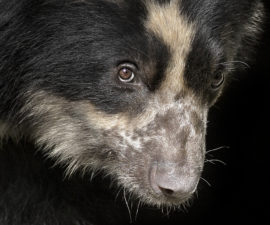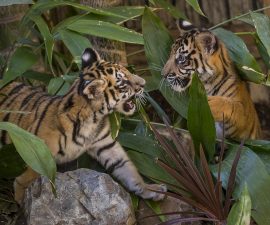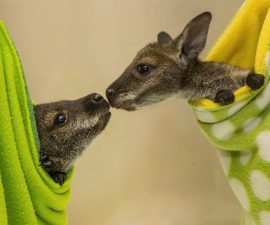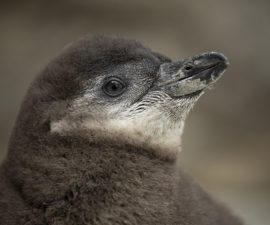Because we can all use a daily dose of cute…
1. A newborn koala joey is only about the size of a large jelly bean, and it can’t even see or hear.

2. Some monkey species give birth to babies that are a completely different color. For example, langur babies are orange while their parents are black.

3. Female lions living in a pride often give birth around the same time, which makes for lots of playmates.

4. Orangutan youngsters stay with their mothers until they’re seven or eight years old and fully weaned, the longest childhood of the great apes.

5. At hatching, a flamingo chick has gray down feathers and is the size of a tennis ball.

6. Meerkats form “babysitter clubs” and share the duty of raising pups—and teaching them how to hide, hunt, clean, and defend all that is theirs.

7. A giraffe calf can stand up and walk within an hour of its birth.

8. Bonobos use touch to give reassurance and comfort to each other. They form close relationships with other members of the troop, even after they are grown.

9. Okapi calves triple their size by the end of their second month, but do not reach full adult size until three years of age.

10. Male jaguar cubs grow more quickly than females—and by about two years old, males are about 50 percent heavier.

11. Elephant calves spend their days practicing making all four legs go in the same direction at the same time, perfecting their ear flaring, and mastering trunk control.

12. Young Panamanian golden frogs are much more secretive than the fully toxic adult, hiding until they can protect themselves with their skin secretions.

13. Rhino calves start growing their iconic horns when they are four to five months old.

14. Giant pandas are only about the size of a stick of butter at birth, and they’re hairless and helpless.

Which baby animal are you? Take the QUIZ.
Jenn Beening is the social media planner for San Diego Zoo Global. Read her previous post, How to Grow a Water-Smart Landscape.





